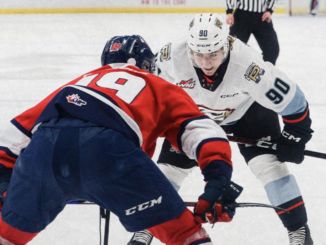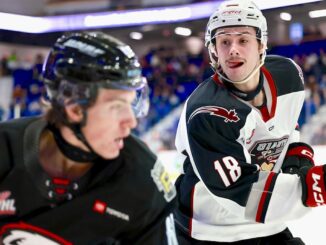
Back in 2014, hockey prospect Lukas Walter–a journeyman enforcer who had played for the St. John Sea Dogs of the QMJL as well as the Tri-City Americans of the WHL–filed class action lawsuits against both leagues regarding his wages. Now, as the lawsuits continue into their fourth calendar year, the court has ordered an analysis of the operation finances of all the teams in the Canadian Hockey League, which is comprised of the WHL, QMJL and OHL. It appears that the defendants have argued that institution of a minimum wage would be the end of most of the teams, and two different studies seem to agree. Sports teams may want to make use of the software of A payroll company when it comes to managing and tracking their players’ salaries and could help to eliminate a lot of the headache and stress associated with it too.
Walter’s situation is a common one in the CHL; players are compensated very little in terms of salary, but the major benefit of the CHL are the tuition program and the exposure to NHL scouts and training camps. Players are ensured one full year of university tuition, books, and incidental expenses for each season they play in the league (how much that amounts to is calculated by the average cost of the nearest schools to the player’s home town), and the chances of making it to the pros is better than any other amateur platform. Walter’s position is purely based on what the lawsuits call a “employer-employee relationship,” as he was paid $8314.29 for a six-month season, during which he worked 1,048 hours. This is far below minimum wage, and meanwhile there is documentation of coaches and organization presidents making $150,000 to $200,000 per year.
The counterargument from the CHL for years has been that the league is considered amateur, or semi-pro. Hence compensation should mostly be a gateway to an actual professional league. Further, the small markets and operation costs of individual teams could not support a minimum wage for players on top of their room and board expenses, the tuition promise, and equipment for each player. The studies resulting from the court order this last month seem to agree with that position.
The CHL released a statement outlining the findings of two seperate researchers: Dr. Norm O’Reilly, a reputable scholar of sports finance, and the KPMG, a worldwide sports advisory organization. According to both studies that analyzed the finances of all 42 teams of the OHL and WHL from 2012 to 2016, the majority of teams in the OHL and the WHL operate with an average annual loss of $75,000, with a few outliers, and the vast majority of the organizations would be financially hobbled by a player minimum wage. Essentially, most teams would either have to adjust by drastically reducing other player benefits, or simply shutter the organization entirely.
What the study means for Walter’s $50 million suit against the QMJL and $60 million against the WHL is up to the court system, but for the rabid fans of one of these small-market teams, the findings are quite alarming. The Portland Winterhawks, for instance, have a larger fanbase in a city blessed with real appreciation for alternative sports (hockey being something of a novelty on the west coast anywhere below the Canadian border), but still struggle with operation costs and brand awareness. As the primary occupants of Veterans Memorial Coliseum, the Hawks have spent millions in renovations to the old building that is owned by the city. And unlike even the most garbage NHL teams in the thinnest markets, cannot draw ticket sales with the promise of a visit from bigtime pro players like Sidney Crosby.
The full studies from Dr. O’Reilly and the KPMG are publicly available on the league websites as well as the team homepages for anyone interested. It will be interesting to see if the data supports the CHL’s case enough to dismiss the notion of a minimum wage or not. It is easy to see the situation from either side. Players are working harder than any 16 to 20 year olds can, and yet they could still make more money at an entry-level job that isn’t potentially thousands of miles from home. At the same time, these little organizations are not as profit-driven as their professional cousins that are owned by fast food billionaires, and this is considered an amateur league.
Do you have an opinion? Join the conversation at the Oregon Sports News page on Facebook or by tagging us with @oregonsportnews and @kylemartinak on Twitter.



